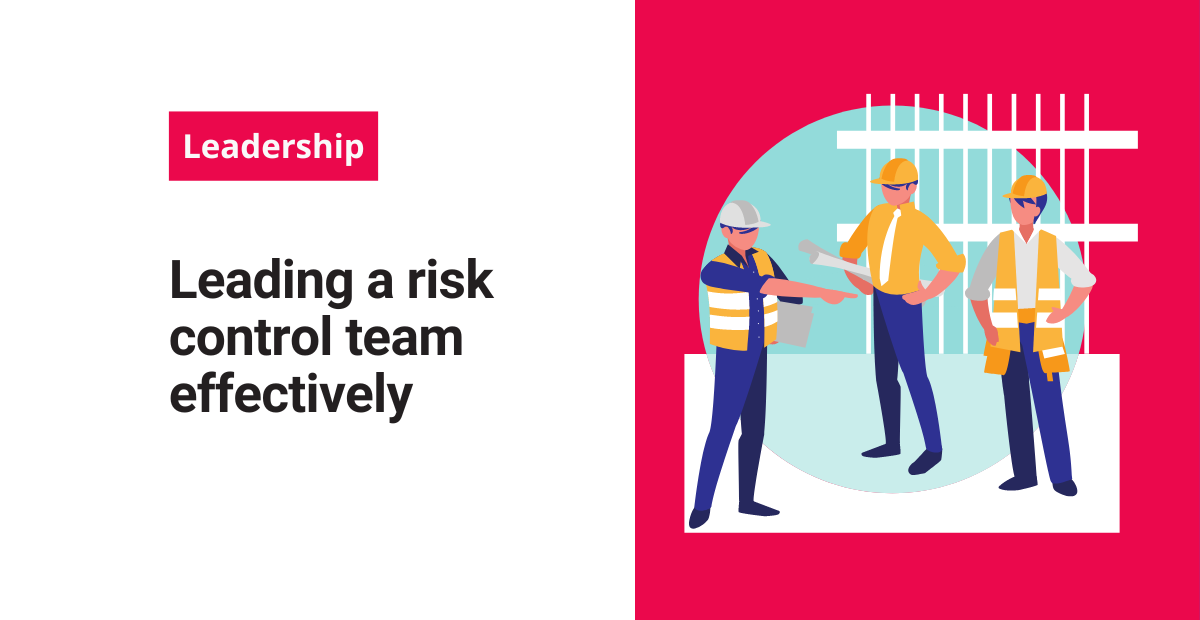Being a people leader can be one of the most challenging yet rewarding parts of anyone’s career. In my experience, leading a risk control team comes with its own unique set of challenges.
People who work in safety are often out in the field, making it more difficult to manage a group. But as a leader, it’s your job to ensure that your team works efficiently and effectively whether you’re physically around or not.
Drawing on my own experience leading a risk control team, I’ve put together this list of things you need to successfully manage your own.
Organized team calendar
Create a shared team calendar for your team to utilize. This way, you don’t have to nag them to find out their location. Instead, you’ll just have access to their schedules.
You can ask your team to log travel time and personal appointments on the calendar as well. Of course, you should also use the team calendar to schedule meetings, performance reviews, and other important tasks.
Regular one-on-ones
Because a risk control team may be scattered across multiple jobsites, you might not get enough face time with your employees. An easy way to combat this is to prioritize regular one-on-ones and check-ins to stay connected.
It’s really up to you how often you want to do these. I’d recommend individual one-on-ones at least once per month. If your team is particularly scattered, I’d consider possibly bi-weekly or weekly check-ins.
If you’re in the same geographical area, these meetings should be face-to-face. If not, then you can do them virtually and travel to see your employees on a quarterly or semi-annual basis.
Intentional team meetings
Intentionality is key when developing strong connections and relationships within a non-traditional team. Your employees should know that you value their time.
This means that you:
- Encourage collaboration, creativity, and discourse during team meetings.
- Spend team meetings wisely and avoid scheduling them just for the sake of it.
Team bonding is important but trust me: your employees will thank you for reducing the amount of time they spend in meetings.
In health and safety, you can’t ever predict when someone will need to respond to an incident. Don’t waste precious time by forcing your team to participate in bonding activities.
Instead, ask them what they would like to accomplish during each meeting. You’ll find that, over time, bonding happens when you work together to solve problems and implement solutions.
Clear goals and KPIs
Leaders need to set clear goals for their teams. Once you’ve set your goals, it’s your job to do everything you can to help your employees meet them.
One idea you might try is to assign each member a KPI to own. When you hold your weekly team meetings, have each person present on their individual KPI.
This not only encourages ownership of team goals, but it also encourages communication between the different members of your team.
Deep understanding of challenges
Lastly, it’s your responsibility to understand the challenges that the risk control team is facing. This is especially true given how often regulatory changes happen. Make sure your team is up to date on the latest requirements.
I also think it’s critical to keep in mind the challenges that come with remote work. Your team may face issues in the field that you simply can’t help them with right when they happen. All you can do sometimes is to listen to barriers and find ways to remove them.
Whether that’s ordering new equipment, changing work schedules, or providing emotional support for an employee who feels isolated in their role, you’re never out of ways to help.
If you implement these best practices, your team will grow together, leading to long-term success and high organizational performance.
Other posts you might like…
No posts

